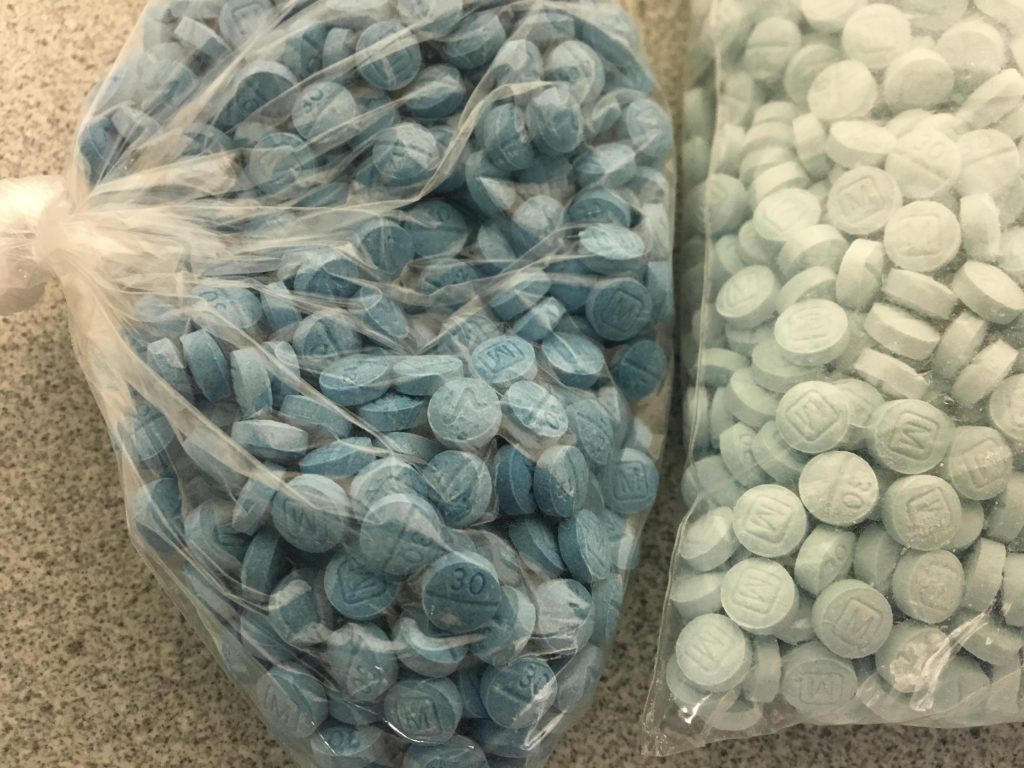Milwaukee County Headed for Record Overdoses in 2020
By March the county was significantly ahead of 2019 in the number of deaths.
The first drug overdose victim in May was just 21 years old.
A mixed-race female, she died from a combination of fentanyl, a synthetic opioid; tramadol, a painkiller; and the designer drug Flualprazolam.
Over the course of the next six days, there would be 16 more cases similar to hers: People found dead or dying in locales across the city— the faces of a drug overdose tally on pace to shatter last year’s record high of 418 in Milwaukee County.
According to data provided on June 11 by the Milwaukee County Medical Examiner’s Office, there were 192 confirmed drug overdose deaths from January 1 to March 19, with 62 more probable cases pending toxicology tests. The office recorded 153 overdose deaths through June 11 of last year.
The victims this year have been diverse: 105 were white, 55 Black, 25 Hispanic, four mixed-race, two Native American and one Asian American. Eighty percent of the deaths involved opioids, and 68 percent were tied to fentanyl.
The victims lived in all reaches of the city, although 10 or more each called neighborhoods in the ZIP codes 53204, 53206, 53212, 53215, 53218 and 53219 home.
The pace of deaths has been disturbingly steady: 39 in January, 45 in February, 40 each in March and April, and 28 deaths through May 19. The city’s hotspot continues to be the South Side, with 19 fatal overdoses occurring in 53204 and 20 in the adjoining 53215 ZIP code.
Rafael Mercado, founder of Team HAVOC, a group that conducts needle cleanups and trainings on how to administer Narcan, a drug used to reverse the effects of opioid overdoses, said the South Side has long been a haven for drug activity.
“Many in the community stay blind and hush about what goes on out of fear of arrest by ICE or of retaliation by those using and/or selling the substances,” said Mercado, who also is the co-founder of MKE Heroin Diaries, a Facebook page devoted to increasing awareness and providing resources about opioids.
When a pandemic and epidemic collide
The pandemic has left many who struggle with substance abuse out of work, with limited resources and hope, effectively creating roadblocks to recovery, said Michelle Jaskulski, senior director of faith and family programs for the Washington, D.C.-based Addiction Policy Forum.
“Unemployment, having constant stress and triggers while not being able to access group meetings or counseling have come together like the perfect storm,” said Jaskulski, who became involved in the movement after her two sons struggled with addiction.
Locally, Mercado said he’s seen an uptick in families who have reached out to ask about signs of substance abuse and with questions about Narcan.
“The added stress of parenting, behavioral health issues and other underlying factors have created a need for one to use illicit substances as a temporary reprieve from it all,” he said.
The impact of the coronavirus on the ongoing drug crisis prompted U.S. Sen. Tammy Baldwin to help lead an effort to request federal funds aimed at preventing the addiction crisis from worsening.
New funds to address local epidemic
Some additional help to address the epidemic in Milwaukee is on the way. On June 11, the City of Milwaukee Health Department announced a $500,000 grant extension from the National Association of City County Health Officials to implement local overdose prevention strategies. Coupled with a previous grant from the association, it increased the total amount of funds to $1.35 million. Some of those funds will support an expansion of the Milwaukee Overdose Response Initiative, a pilot program originally launched on the South Side.
The program, a collaboration between the health department, the Milwaukee Fire Department and other community partners, involves having peer counselors ride with paramedics six days a week to talk to people who overdosed but were resuscitated, said Ald. Michael Murphy, who co-sponsored the program.
“This positive development is needed to further combat the devastation that the opioid epidemic has caused to Milwaukee communities,” Murphy said in a statement.
With no end to the pandemic in sight, help can’t come soon enough for the growing number of active users, said Jaskulski, whose organization created a free app to support people in recovery during COVID-19.
“The pandemic and the epidemic are kind of feeding into each other, and creating a vicious cycle of addiction and death,” she said. “This is a desperate time and many communities are at risk.”
This story was originally published by Milwaukee Neighborhood News Service, where you can find other stories reporting on fifteen city neighborhoods in Milwaukee.
More about the Opioid Crisis
- Co-Chairs Criticize DHS For Lack of Plan, Transparency with Opioid Settlement Funds - Joint Committee on Finance - Oct 21st, 2025
- Opioid Treatment Program Opens First Clinic in Milwaukee - Isiah Holmes - Oct 20th, 2025
- County Executive Crowley, Chairwoman Nicholson Sign Legislation Approving $9 Million for Efforts to Compat the Opioid Crisis - David Crowley - Aug 15th, 2025
- How Are State’s Local Governments Spending Opioid Settlement Payouts? - Addie Costello - Aug 4th, 2025
- MKE County: How County Will Spend $9 Million in Drug Settlement Funds - Graham Kilmer - Jul 29th, 2025
- Milwaukee County Executive David Crowley Announces Over $9 Million for Initiatives to Combat Opioid Epidemic - David Crowley - Jul 17th, 2025
- AG Kaul, 45 Other Attorneys General Plan to Join $720 Million Settlement with Eight Opioid Drug Makers - Wisconsin Department of Justice - Jul 14th, 2025
- Attorney General Kaul Announces Consent Judgment with Kroger Over Opioid Crisis - Wisconsin Department of Justice - Mar 21st, 2025
- Baldwin Votes to Strengthen Penalties, Step Up Enforcement Around Deadly Fentanyl - U.S. Sen. Tammy Baldwin - Mar 17th, 2025
- Wisconsin Communities Get Millions From Opioid Settlement as Deaths Decline - Evan Casey - Mar 1st, 2025
Read more about Opioid Crisis here
Political Contributions Tracker
Displaying political contributions between people mentioned in this story. Learn more.




















